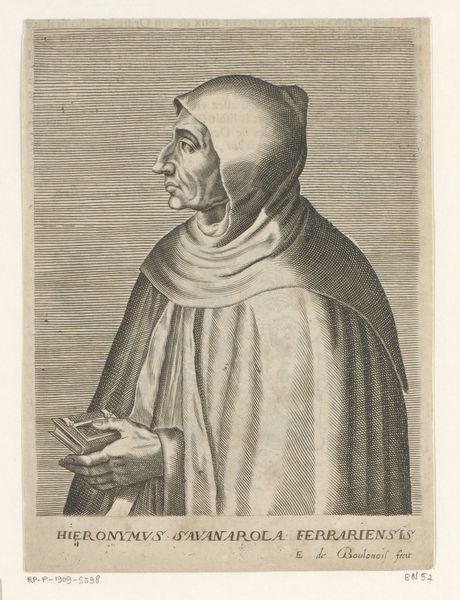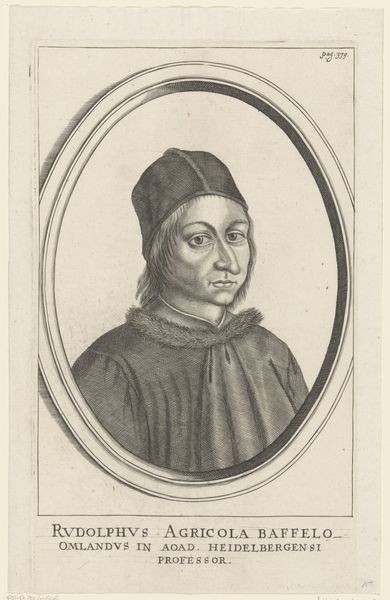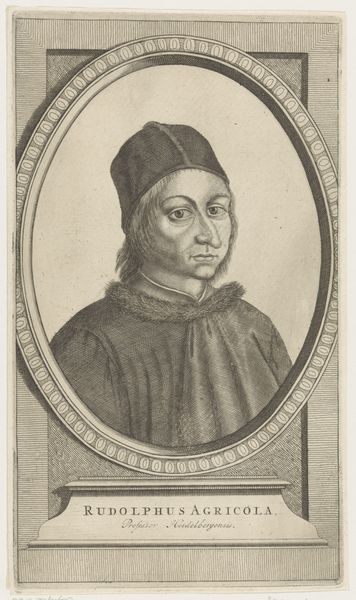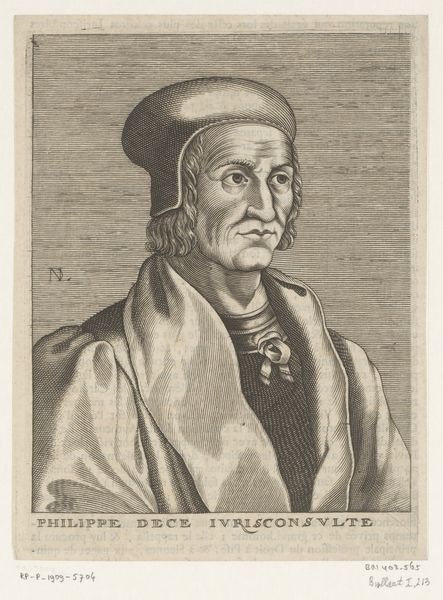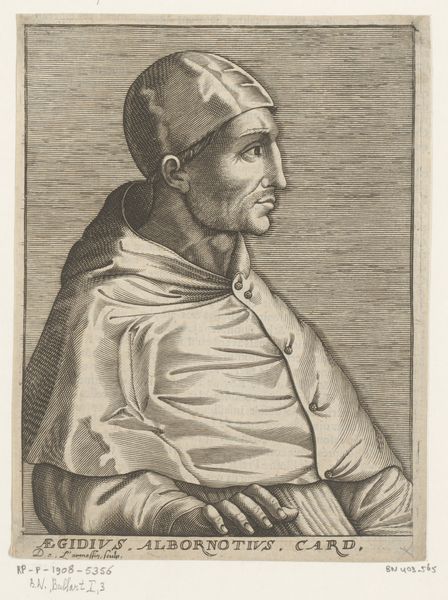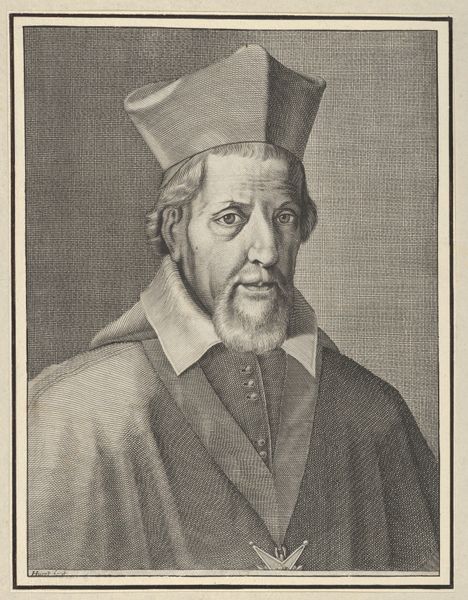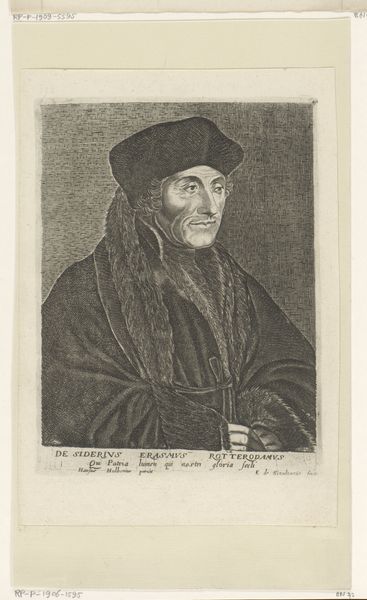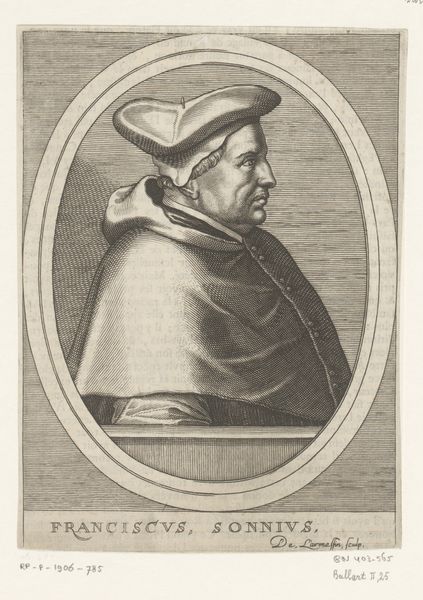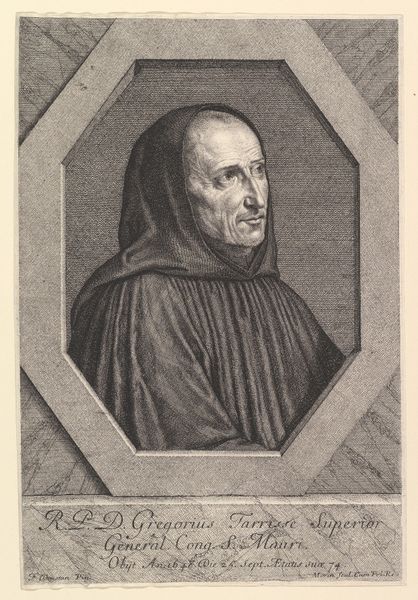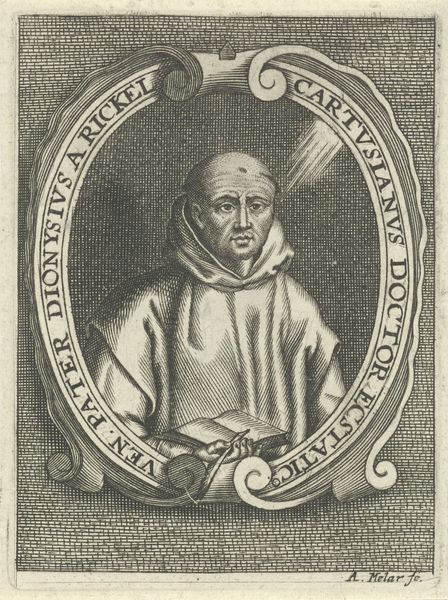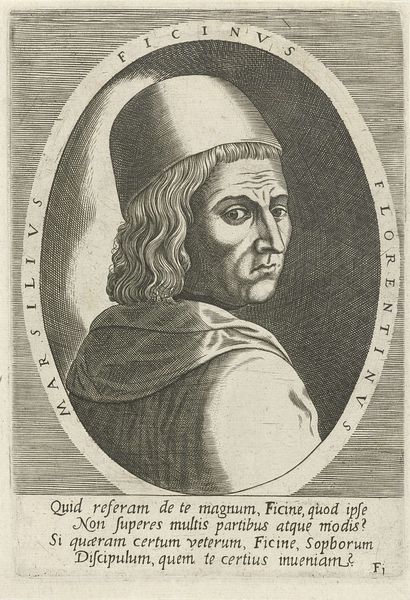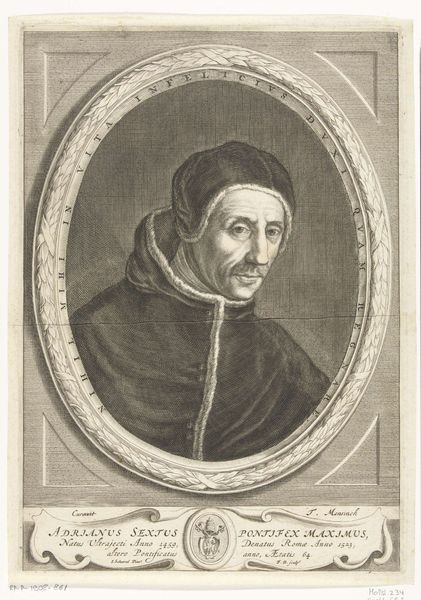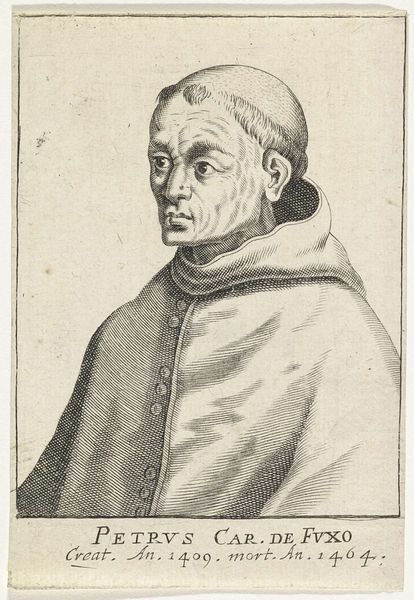
engraving
#
portrait
#
baroque
#
pencil drawing
#
line
#
engraving
#
realism
Dimensions: height 186 mm, width 137 mm
Copyright: Rijks Museum: Open Domain
Curator: Welcome. Here we have Edme de Boulonois' engraving, “Portret van Agnolo Poliziano," created in 1682. Editor: My first impression? A man burdened by his own thoughts. The stark lines of the engraving highlight the gravity in his expression, doesn’t it? The contrast is just striking. Curator: Indeed. De Boulonois uses line to its fullest potential. Notice how the hatching and cross-hatching define the form, creating volume and depth within the limitations of the medium. There’s a strong use of chiaroscuro happening here. Editor: And he's been memorialized! I imagine a certain amount of status to even be rendered in this way. This engraving was produced during a period heavily influenced by baroque aesthetics and royal portraiture— it would have been destined for a publication, no doubt serving as a key component in disseminating Poliziano's image amongst intellectuals. Curator: The line work does lend itself well to print reproduction. It feels very practical, no? One must think of how an engraving reproduces on the page. But also consider the psychological reading: those precisely etched lines create a sense of seriousness but also age in Politian's face. Editor: So, it's both practical and communicative...I see that tension there. What would the public’s general understanding of historical figures look like if all portraits are essentially serious? The historical memory, you might say, rendered in strokes. Curator: Yes, the public performance of "historical memory" that has become canon through repeated artistic and publishing renderings... but also the careful composition with the light sources. Those considerations do suggest a level of intention beyond mere reproduction. It has an undeniable visual weight, it makes a kind of compositional architecture. Editor: Fascinating. Considering the dual intentions allows for so many more access points, doesn't it? Curator: It does indeed. It speaks to the complexities of the work—a piece that blends purpose and artistic strategy to generate a compelling image. Editor: Well, seeing it now and speaking with you...the politics of image-making certainly stand out, even across all of those years!
Comments
No comments
Be the first to comment and join the conversation on the ultimate creative platform.
